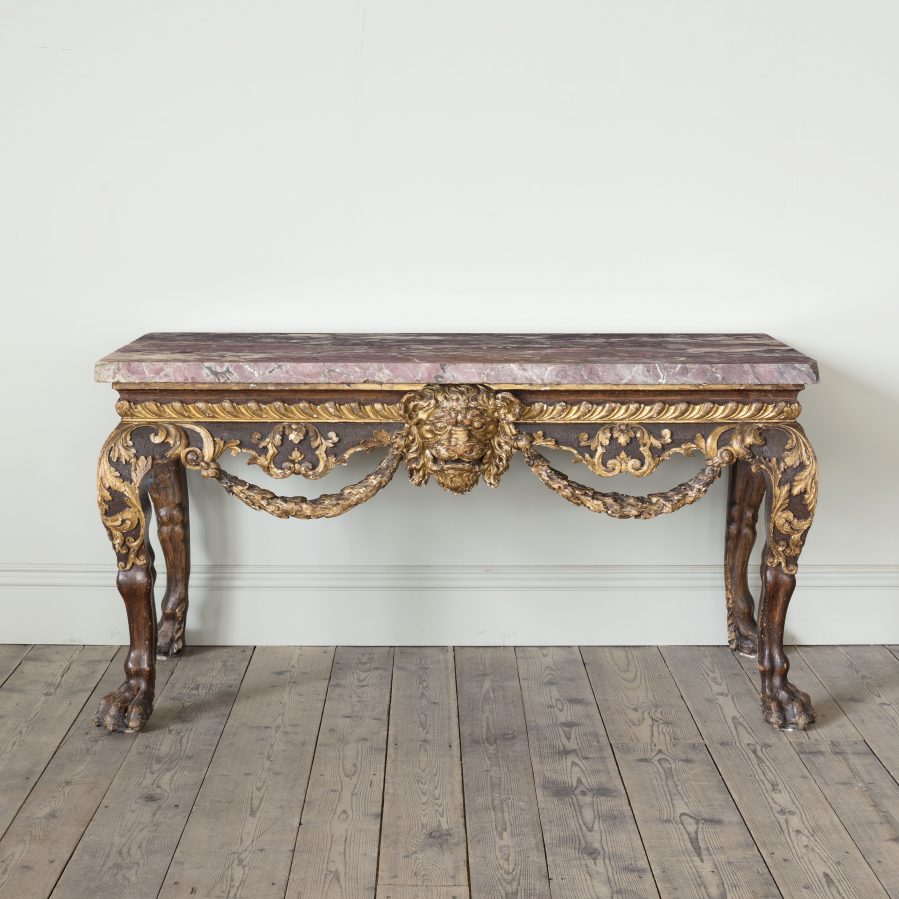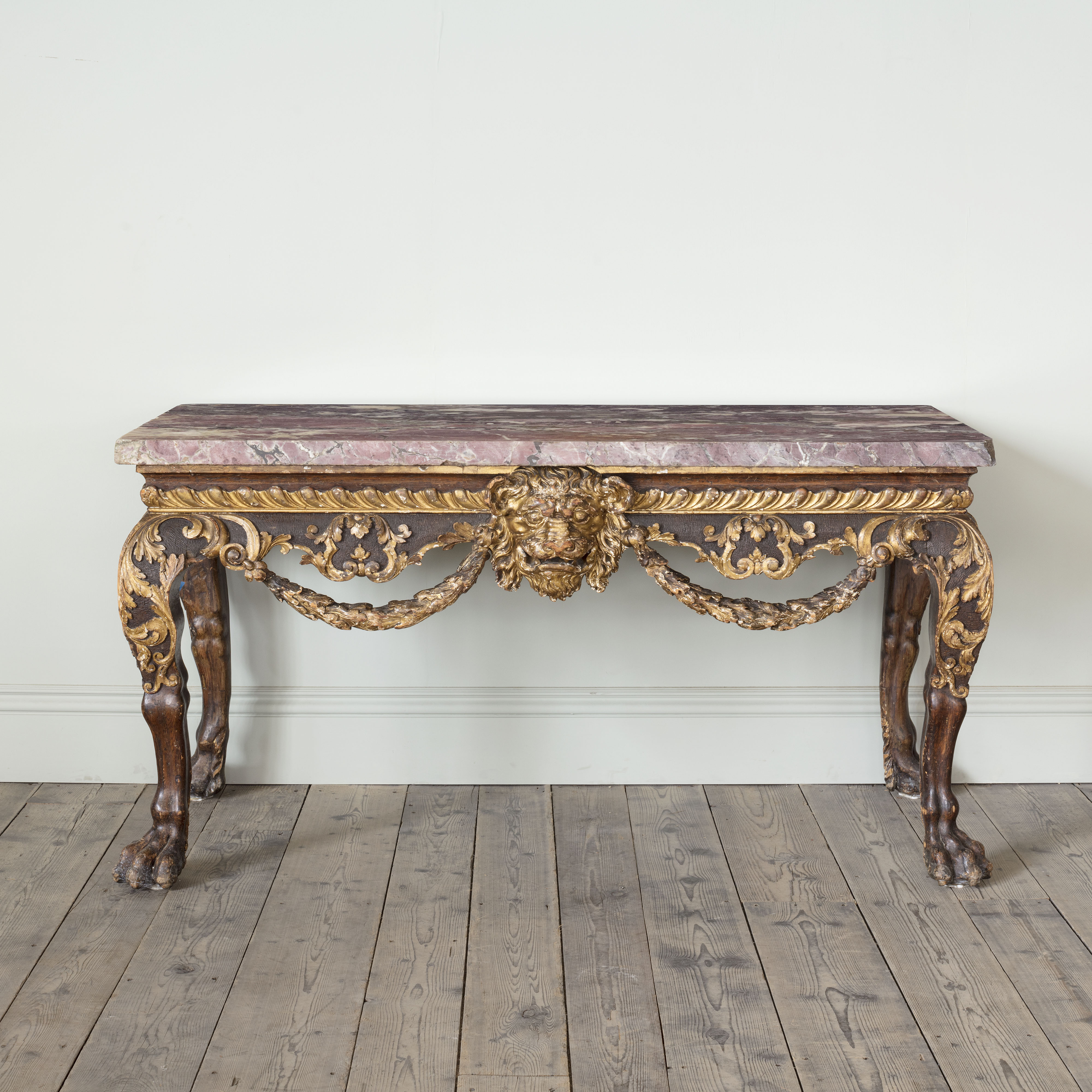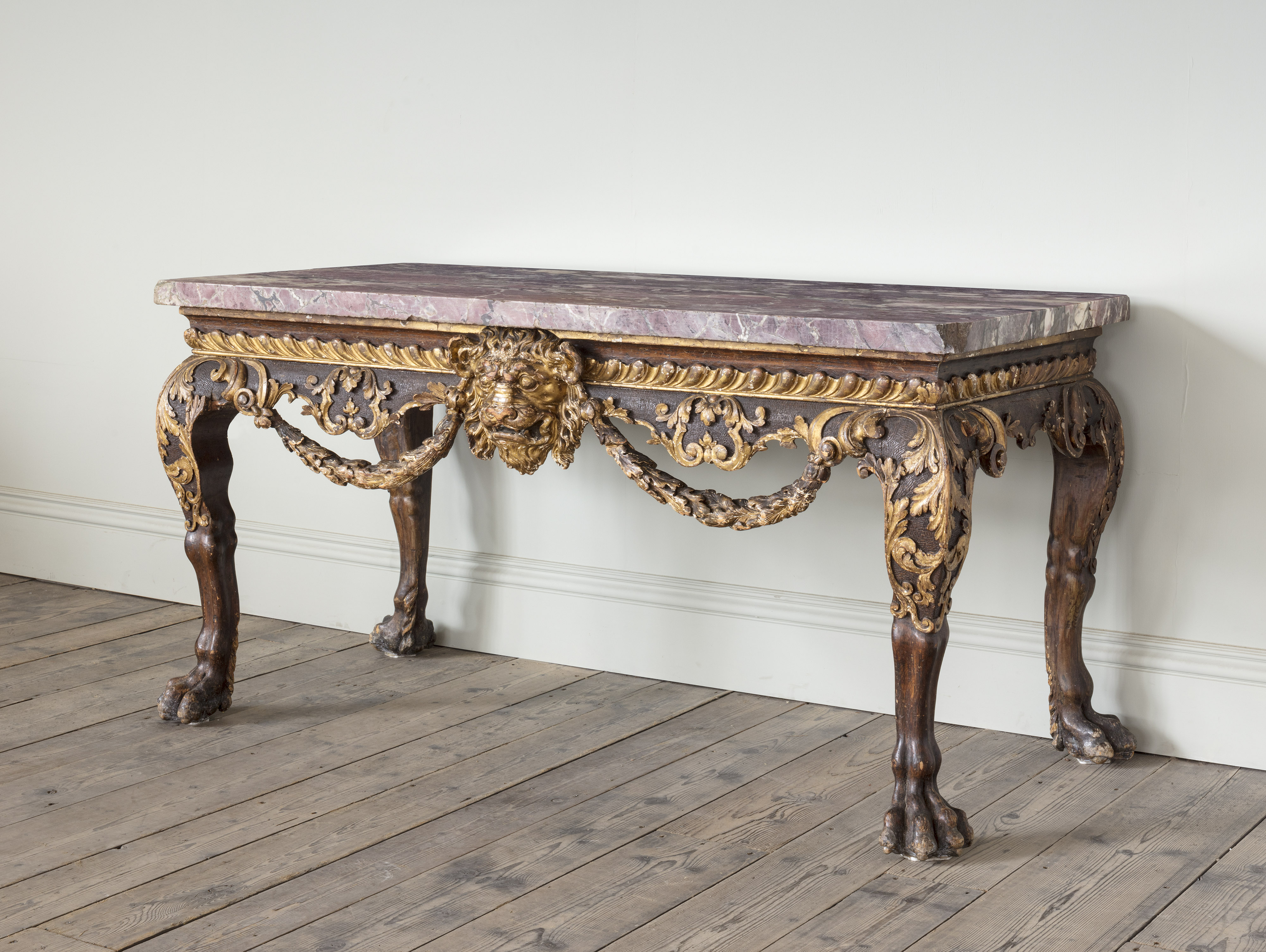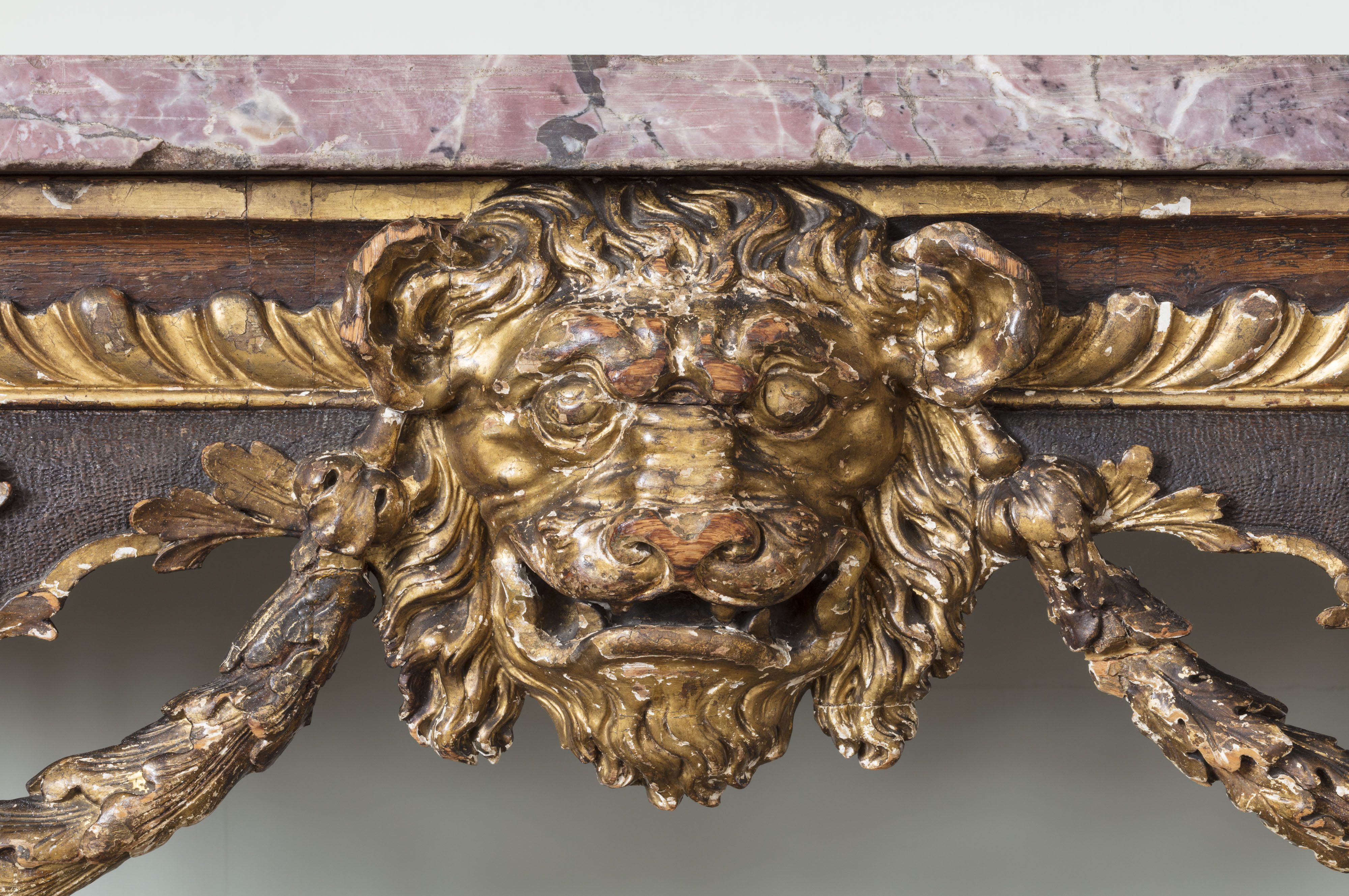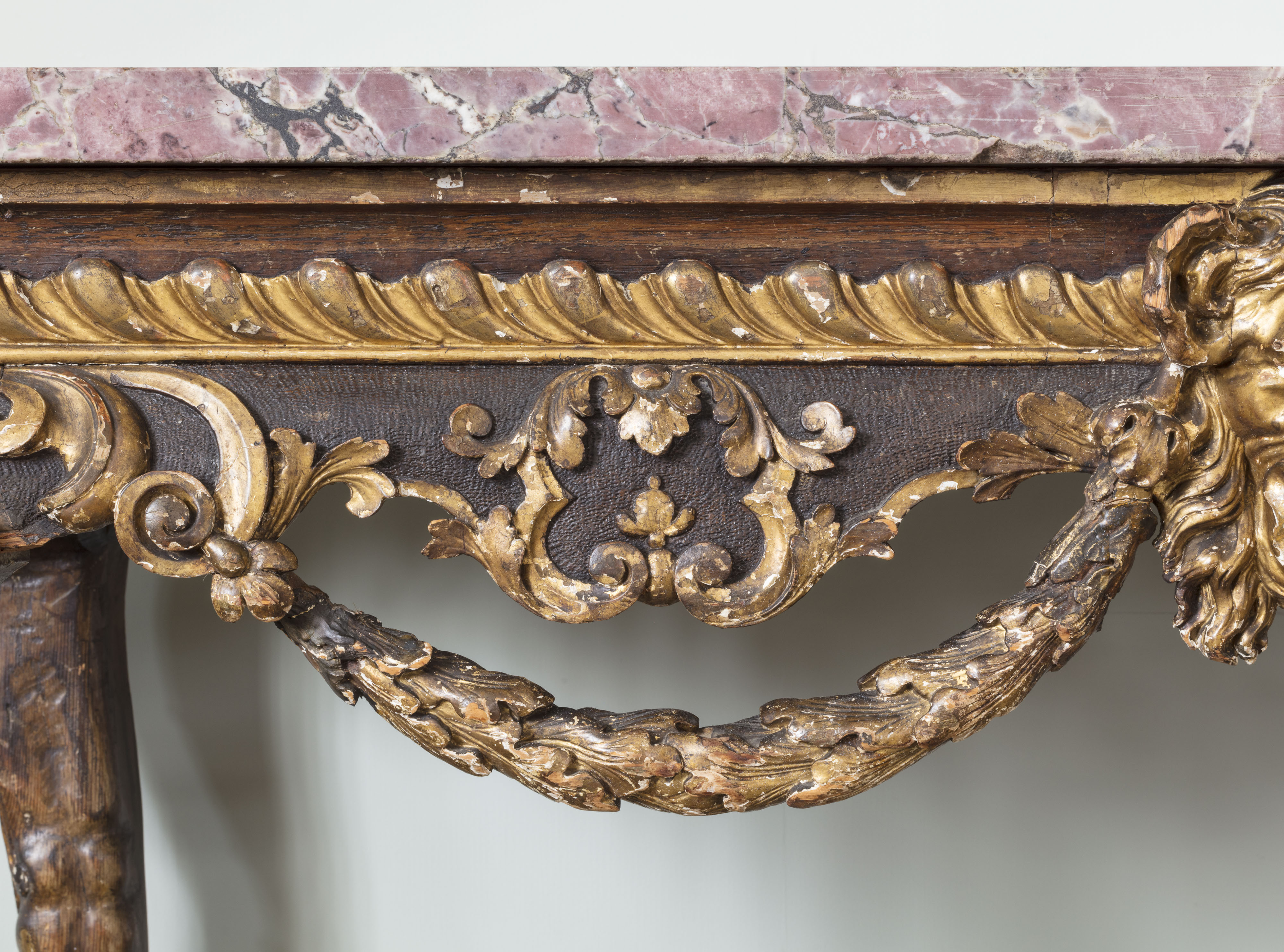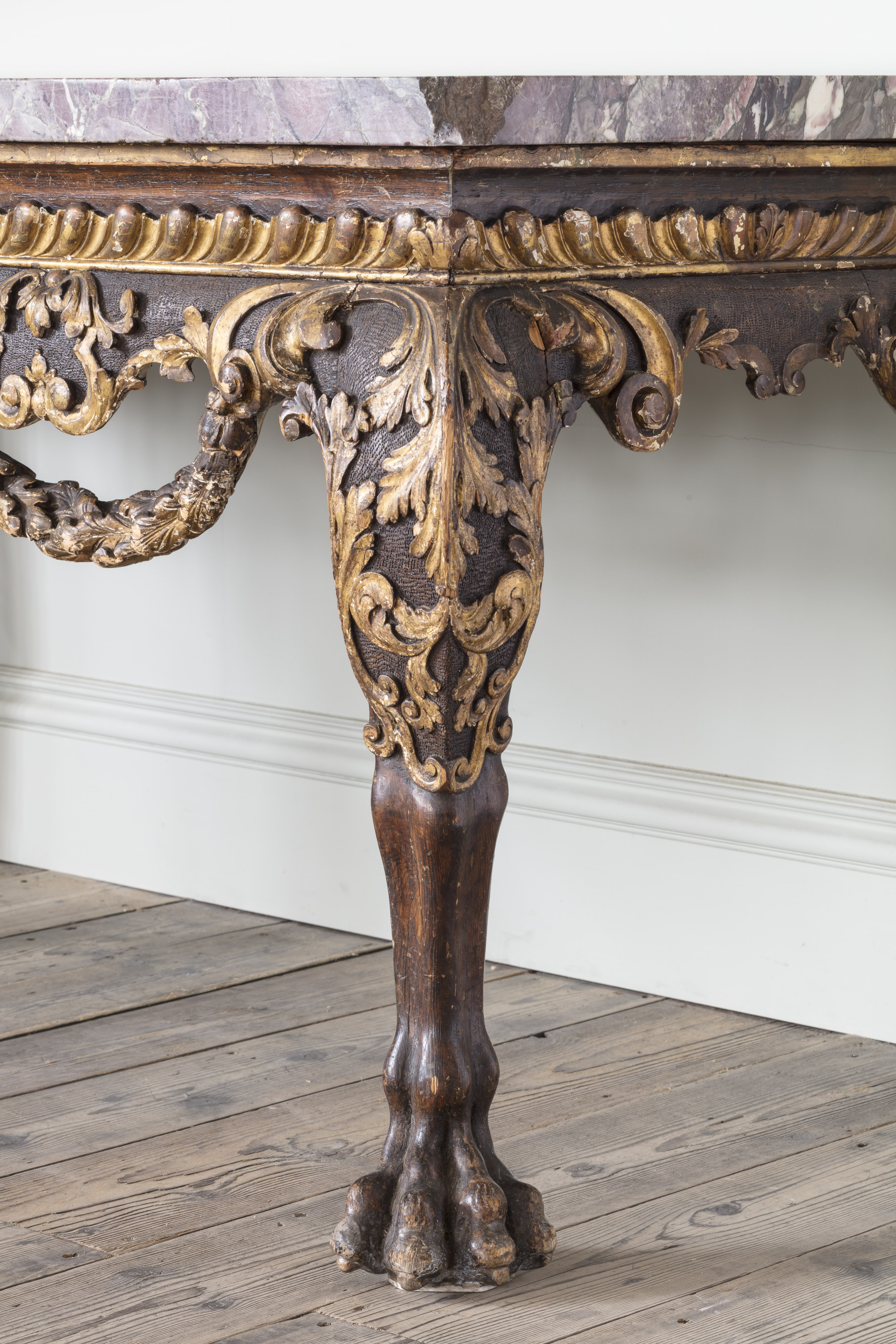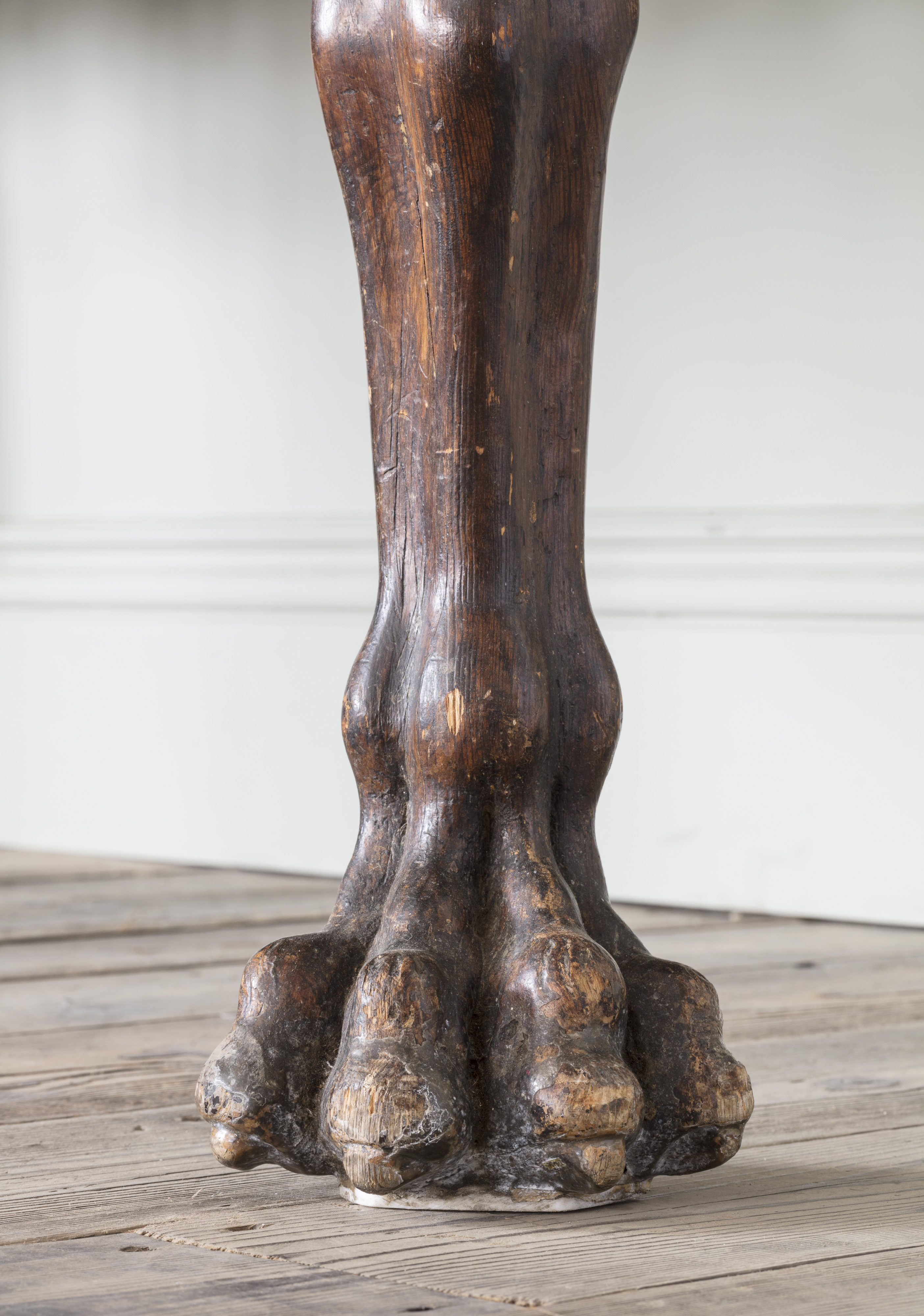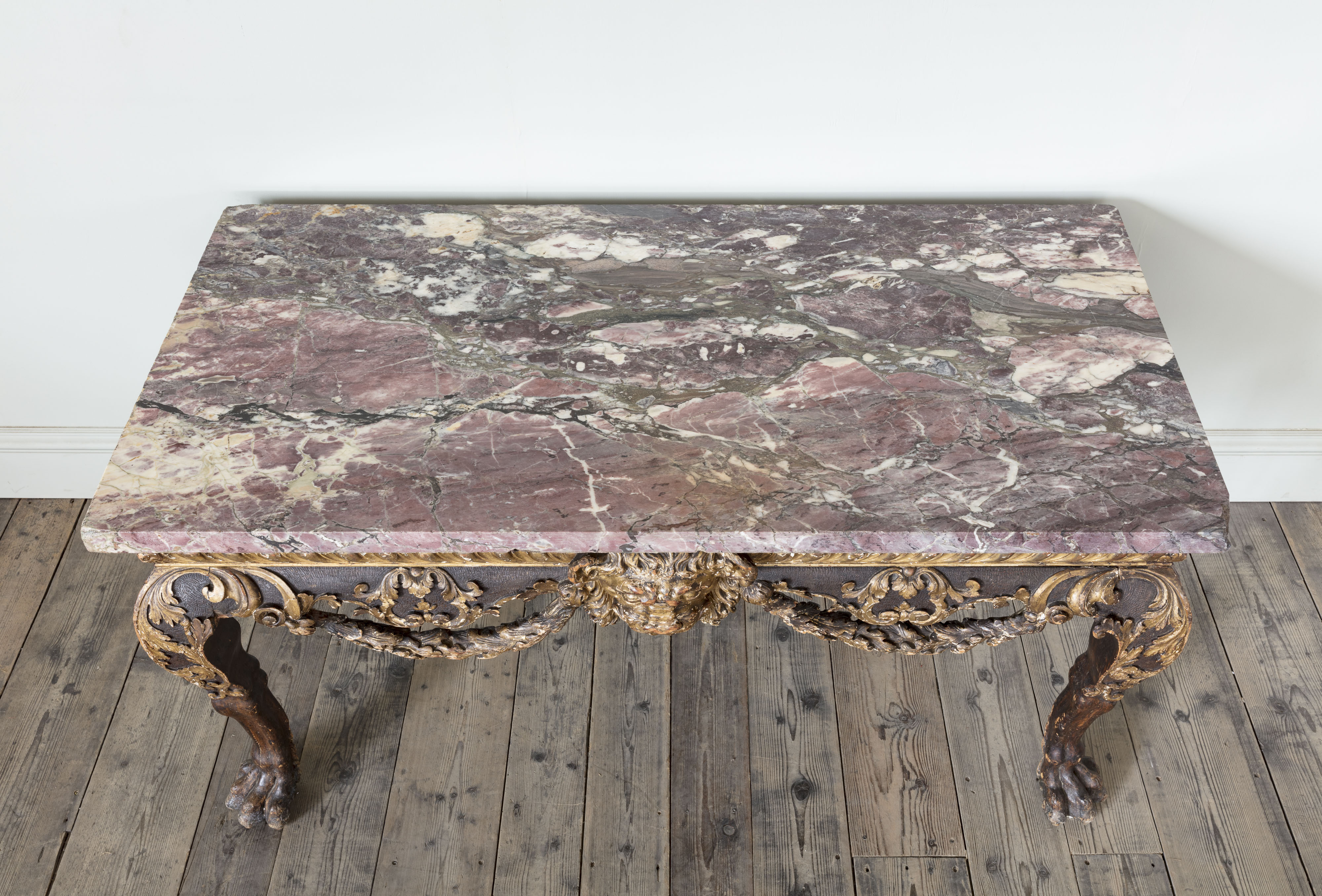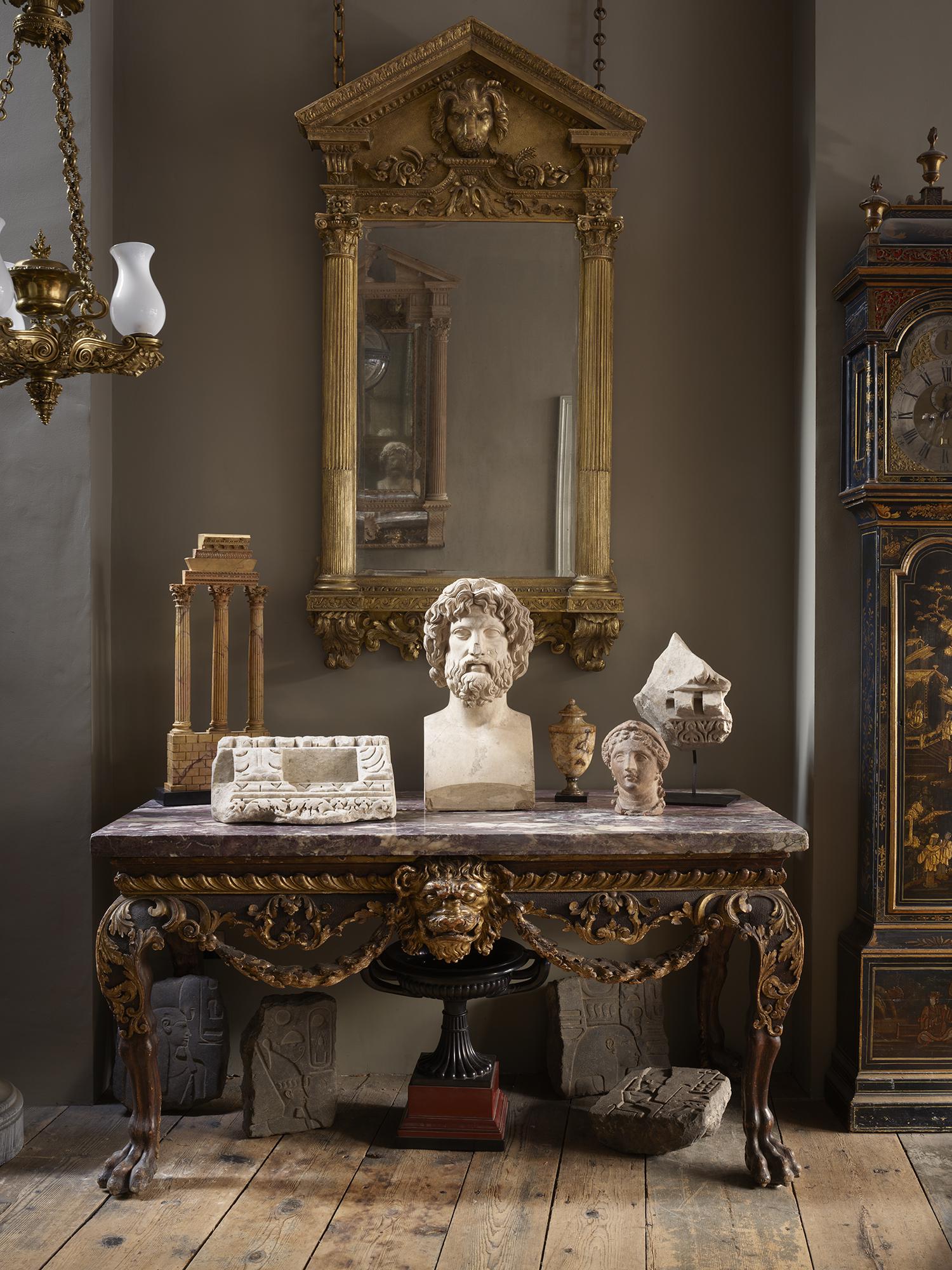A George II Parcel Gilt Console Table in the Manner of William Kent, from the Clermont Club (44 Berkeley Sq.)
The table with lobed and leaf carved ogee moulding and scrolling acanthus carved frieze with central lion’s mask, with oak leaf carved swags on carved cabriole legs and well carved lion paw feet, and beautifully figured 18th Century fleur de peche marble slab top. A label attached to the table frame reading ‘HIRSCH FEB…Purchase of a gilt console table.’, the slab top inscribed on the underside ‘Claremont Club’ [sic].
Height: 87 cm, 34 1/4″
Width: 169 cm, 66 1/2″
Depth: 81 cm, 31 7/8″
price on application
Provenance and further stylistic literature:
Previously under the ownership of the Playboy entrepreneur, Hugh Hefner (1926-2017) displayed in the hallway of his Los Angeles mansion until 2018. Prior to this, the table was part of the furnishings of the famous Clermont Club, based in 44 Berkeley Square London W1, a William Kent house which Playboy owned between 1972 and 1982 and is now the site of Annabel’s. the Clermont Club was founded by John Aspinall (the infamous gambler and zoo-keeper) in 1962, and it is thought that the table came to the club during the building’s substantial renovation and refurbishment during this time. Aspinall employed the decorator John Fowler (of Sibyl Colefax & John Fowler) to restore and renovate the interior of the club. Fowler revitalized the original William Kent decorations and brought in antique furnishings to give the club a lavish interior, sensitive to its Kentian history.
Popularized by William Kent in the second quarter of the eighteenth century, the carved motif of ‘the lion head with swags’ appears in Kent’s architectural decorations at Houghton, and again on the furniture in the ‘Marble Parlour’ and ‘Green Drawing Room’. A similar lion’s head and swag design was used on a William Kent table in the ‘Belasarius Room’ at Raynham Hall (see William Kent: Redesigning Georgian Britain, edited by Susan Weber, BARD and Yale 2014). Kent designed legs terminating in paw feet for furniture at Houghton, Wanstead and the Treasury Building, and a similar (rather worried-looking) lion can be seen in a recently sold Kent design for a sculptural frieze. In photographs taken of the Clermont Club in 1962 by Country Life there is a heavily carved giltwood and marble topped table in eighteenth-century style, and most significantly, there are two Kentian style eighteenth century tables with masks of Hercules and lion-pelts in the Saloon. No doubt the designs appealed as much to the owner Aspinall’s zoological interests (his tiger cubs used to play in the club) as to Fowler’s Kentian scholarship.
Previously to its time the Clermont, it is presumed that the label ‘HIRSCH FEB…Purchase of a gilt console table.’ that is affixed to the frame of the table, infers that is that it was sold from the notable London furniture collection of Leopold and Henry Hirsch in the 1930s. The style of the table is very much in keeping with the Hirsh’s taste for elaborately carved 18th Century furniture, however, this table does not appear in the 1931 and 1934 sales catalogues of the Hirsch collection.
There are two other known tables carved to exactly the same design; one, also in pine, was sold in 1952 to the North Carolina Museum of Art by the London dealer Basil Dighton, with a reputed provenance to Grimsthorpe Castle. It was sold again in 1993 (Sotheby’s, NY, 16 October 1993, lot 186 ($145,000) and again in 2000 (Sotheby NY May 26, 2000, lot 283, $350,000), when it was heavily gessoed and partnered with a pale brown marble top. It sold yet again at Christies 21 November 2011, having been stripped and stained ($50,000). The second table of identical design (but later in date, an assumed copy of the table of Clermont origin) is at the antiques dealership Jamb, and has a cursive brass plaque reading ‘Bought from the Grenfell Collection, 1916.’ It was formerly in the collection of Sir Lewis Richardson Bt (1873-1934) at Harrington House, Kensington Palace Gardens, and afterwards by descent (as the plaque would suggest, it is thought to have been in the collection of William Henry Grenfell). The table is constructed in mahogany, with similar parcel gilt detailing, however paired with a Sarrancolin marble top.


